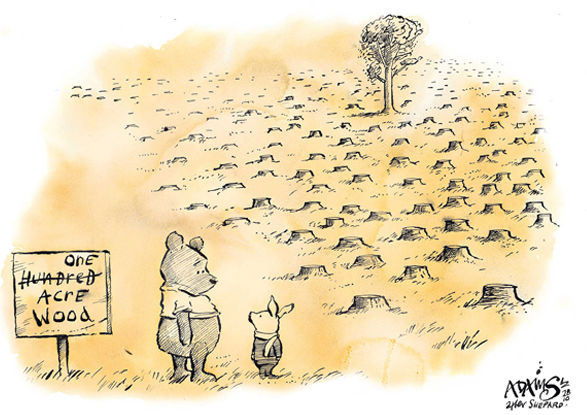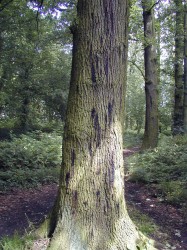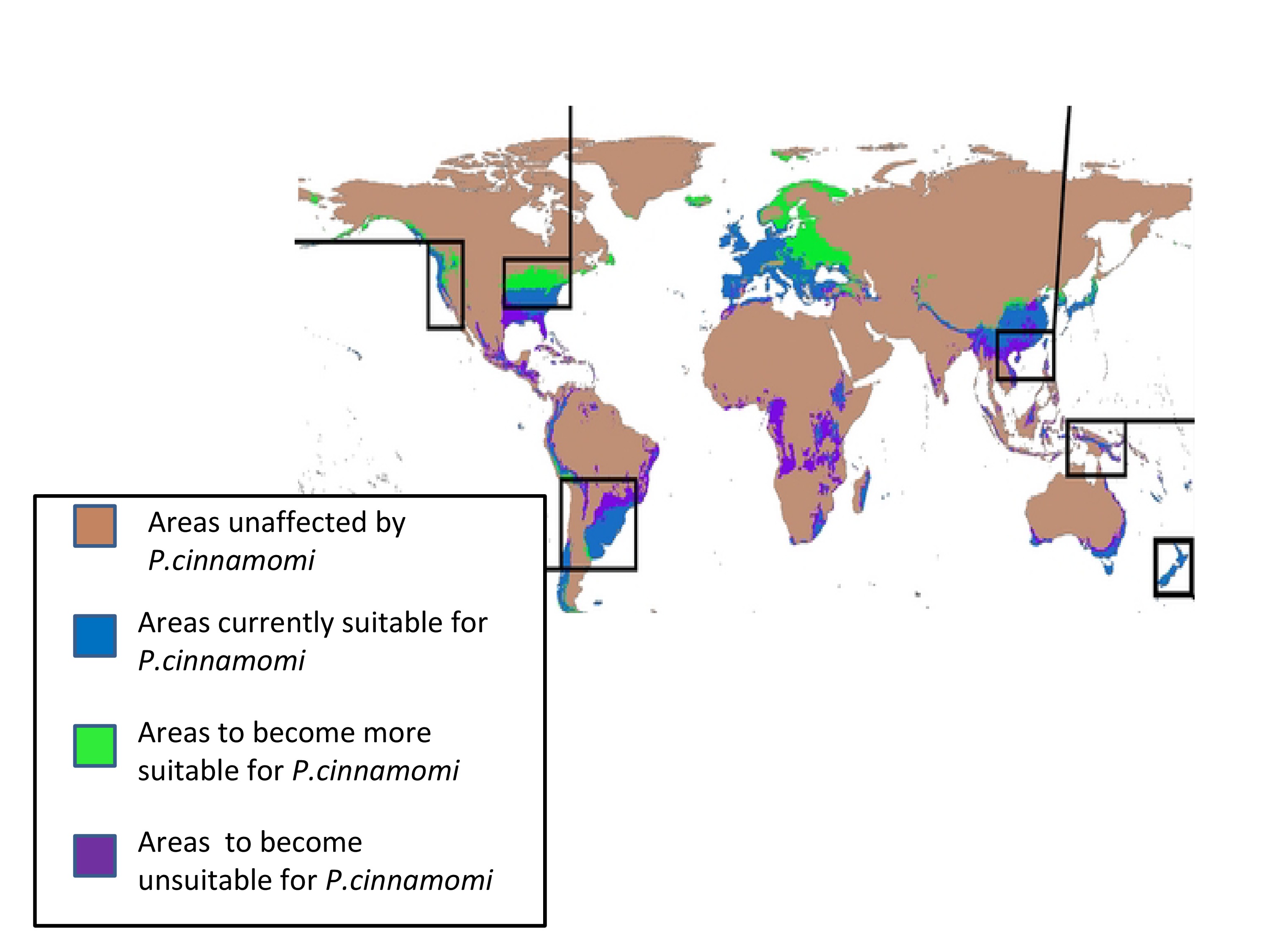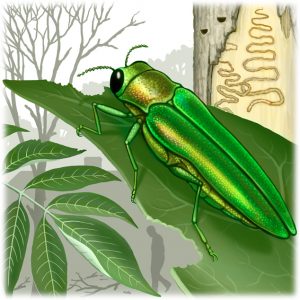Imagine Winnie the Pooh without One Hundred Acre Wood, Robin Hood without Sherwood Forest or Baloo without his prickly pears.

Back to the real world

Symptom: Profuse stem bleeding (Forestry Commission, 2017).
The facts are that oaks are being decimated by acute oak decline (Forestry Commission, 2017), pears by fire blight (Johnson, 2000) and the Woodland Trust estimates that the UK could lose 130 million ash trees (Woodland Trust, 2017). These plants are part of our culture and economy but imagine how much worse it would be if you lived in the developing world and your staple diet was at risk.
Rice, the basic diet of half of the world’s population (FAO, 2013), is under threat from a serious disease called rice blast. Silicon is rice’s natural ‘knight in shining armour’ shielding it from this pathogen. Elevated CO2 levels are expected to decrease the plants silicon production, leaving rice vulnerable to its arch enemy and reducing overall yield (Elad and Pertot, 2014).
Invasion of the north
Scientists expect some pathogens such as Phytophthora cinnamomi one of the world’s most invasive species to shift northwards due to warmer and wetter winters increasing the chance of overwinter survival in areas that are currently unsuitable (Burgess et al., 2017).
Although drier summers should have a counteracting effect, trees that have already been infected by P.cinnamomi are less likely to recover due to a reduced ability to take up water by rotting roots and increased drought stress (Burgess et al.,2017).

Researchers are working against the clock to create new fungicides and develop disease resistant crops but these interventions appear to have some worrying knock on effects.
For example, researchers from the University of Exeter thought they might have a solution to ash dieback by breeding from older, resistant trees. However, it was recently discovered that that these older trees produce fewer chemicals to ward off the deadly emerald ash borer (University of Warwick, 2017). A double strike from ash dieback and emerald ash borers could wipe out ash in the UK!

The news is not all bad
Although Baloo may lose his prickly pears, not all diseases are expected to increase with climate change and he may gain bananas. One disease expected to decrease in severity and frequency reducing the impact it has on global yield is black sigatoka a disease which decreases the leaf area in bananas reducing photosynthesis (Elad and Pertot, 2014 & Ploetz, 2001).
So where does that leave us?
There are still many gaps in plant disease research involving mechanisms of infection, resistance and the affect on plant function. There are also many unanswered questions- could a decrease in one disease kick off the invasion of another? Such factors make it impossible to predict the exact change to our landscape and crops. But the simple answer to my question is yes. Unless plant disease research achieves some major breakthroughs the chances are that our landscape will look very different and we may need to develop a taste for new foods.
References
Adams, 2012. Cartoon: One Acre Wood. Available from: http://www.englishblog.com/2012/10/cartoon-one-acre-wood.html#.WNMBBG-LTIX [Accessed on: 16/03/2017].
Burgess, T.I., Scott, J.K., McDougall, K.L., Stukely, M.J.C, Crane, C., Dunstan, W.A., Brigg, F.,Andjic, V., White, D., Rudman, T., Arentz, F., Ota, N. and Hardy G.E.ST.J., 2017. Current and projected global distribution of Phytophthora cinnamomi, one of the world’s worst plant pathogens. Global Change Biology; 23: 1661-1674.
Clark, P., 2013. Health and Science: The emerald ash borer’s domino effect on human health. Available from: http://www.washingtonpost.com/wp-srv/special/metro/urban-jungle/pages/130514.html [Accessed on: 21/03/2017].
Elad, Y. and Pertot, I., 2014. Climate change impacts on plant pathogens and plant diseases. Journal of crop improvement; 28 (1): 99-139.
FAO, 2013. FAO statistical year book 2013: world food and agriculture. FAO statistical year books, Rome, FAO: p.132. Available at: http://www.fao.org/docrep/018/i3107e/i3107e.PDF [Accessed on: 22/03/2017].
Forestry Commission, 2017. Acute Oak Decline. Available from: https://www.forestry.gov.uk/acuteoakdecline [Accessed on: 21/03/2017].
Johnson, K.B. 2000. Fire blight of apple and pear. The Plant Health Instructor. DOI: 10.1094/PHI-I-2000-0726-01. Updated 2015.
Ploetz, R.C. 2001. Black sigatoka of banana: The most important disease of a most important fruit. The Plant Health Instructor. DOI: 10.1094/PHI-I-2001-0126-02. Available from: http://www.apsnet.org/publications/apsnetfeatures/pages/blacksigatoka.aspx [Accessed on: 22/03/2017].
University of Warwick, 2017. Ash dieback- insect threat to fungus- resistant trees. Available from: https://phys.org/news/2017-01-ash-diebackinsect-threat-fungus-resistant-trees.html [Accessed on: 16/03/2017].
Woodland Trust, 2017. Protecting landscapes. Available from: https://www.woodlandtrust.org.uk/visiting-woods/tree-diseases-and-pests/what-we-are-doing/protecting-landscapes/ [Accessed on: 21/03/2017].
Word Count: 494
Recent Comments